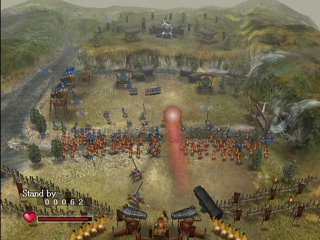Graphic Lit: Manga, Manga, Manga!
I was so busy playing catch-up after the Memorial Day weekend I didn't have a chance to post anything about Alex Toth's death (not that anything I would have said could have been more thoughtful or eloquent than Tom's post.) I'm sure there's a lot more that I missed too.
Oh well, here's last Friday's column.
Time for a look at some of the more interesting manga that has popped up in stores over the past few months.
Manga, for those of you in the dark, is the Japanese term for comics. These comics, usually packaged in thick, $10 volumes, have taken the U.S. by storm in recent years. Most of the books that have crossed the Pacific are aimed at teens or young adults. A few, however, seek a decidedly older audience:

"Life"
by Keiko Suenobu
Tokyopop, $9.99.
Self-mutilation, attempted suicide and general teenage self-loathing are on vivid display in this edgy new shoujo (girl’s) manga.
Stress over starting a tough new school, along with a betrayal by a close friend, push Ayumu to the point where she starts cutting her arms in order to ease the tension. Meanwhile, her super-happy new friend Shii-chan becomes despondent when her boyfriend dumps her.
This sort of material could easily become exploitive, didactic or worse, mawkish. Surprisingly, Suenobu manages to avoid those problems through her stunning use of visual metaphors. Showing Ayumu literally seeking escape through an open wound, for example, helps explain the comfort she feels in hurting herself.
While it veers into occasional melodrama, "Life" handles its subject matter with tact and thoughtfulness and is well worth checking out.
"Monster"
by Naoki Urasawa
Viz, $9.99.

Speaking of melodrama, here’s a tightly-wound thriller from Urasawa, an acclaimed manga author in Japan ("Pluto," "20th Century Boys"), that’s so expertly plotted, you never notice it’s more ham-fisted moments until after you put the book down.
An acclaimed up-and-coming doctor sacrifices his career to save the life of a boy, only to discover that, years later, he’s become a serial killer. International intrigue, conspiracy plots and bodies pile up as the doctor attempts to render justice unto his former patient.
Some of the book’s characters might as well have the words "villain" or "victim" emblazoned on their foreheads, so obvious are their motivations. Yet Urasawa is an incredibly deft cartoonist, particularly in his page layouts and facial expressions, and enough hints are dropped to suggest that serious moral quandaries await in future volumes.
created by Takao Saito
Viz, $9.99.

"Golgo" is, along with "Monster," part of Viz’s new "Signature Line," designed to appeal to older readers. Golgo himself is one of manga’s most popular creations — an assassin so cool and collected he makes James Bond seem like Jerry Lewis.
This ongoing series cherry-picks the best stories that appeared in the 40-plus years of the character’s history. Golgo’s longevity is not due to the character himself, whose personality is akin to cardboard, but to how people react to him.
A virtual cipher, Golgo is placed in a variety of intriguing settings, including Tiananmen Square and Iraq. Watching events unfold around him as he goes about his murderous business makes the series fun.

by Yua Kotegawa
ADV Manga, $9.99.
A young man murders his mother, then is discovered by a young lady who offers to help him get rid of the evidence. Teaming up with another sullen youth, the three go on a violent spree against a terrorist organization.
Sounds pretty shocking right? But the most surprising thing about "Anne Freaks" is how utterly banal it is. Rather than poke its nose into some uncomfortable or at least exploitive areas, the book quickly settles down into a routine thriller, with lots of simpering angst thrown in for good measure.
"Anne Freaks" would like you to believe it’s "out there," but the truth is it doesn’t have the strength of its convictions to follow through on its premise.

by Kazuo Koike and Ryoichi Ikegami
Dark Horse, $14.95.
Over-the-top sex and violence dominate this fast-paced manga about an assassin who sheds tears every time he kills (hence the title).
Hailed as a classic, "Freeman" is more than a bit silly at times — that’s part of its charm — yet proves to be an effective thrill ride that will especially be enjoyed by fans of crime fiction.
by Toru Yamazaki
Dark Horse, $12.95.
George Romero meets Mad magazine in this extremely gory parody of Japanese horror comics. Young Takako is bullied by her classmates until she becomes half-octopus and then takes her revenge on her tormentors and anyone else who gets in her way.

Despite the buckets of blood thrown at the reader, "Octopus Girl" is tongue-in-cheek, as its rather over-the-top parody of "The Little Mermaid" shows. Those willing to put up with its extremely dark and juvenile tone will enjoy it immensely. You know who you are.
Copyright The Patriot-News, 2006





























